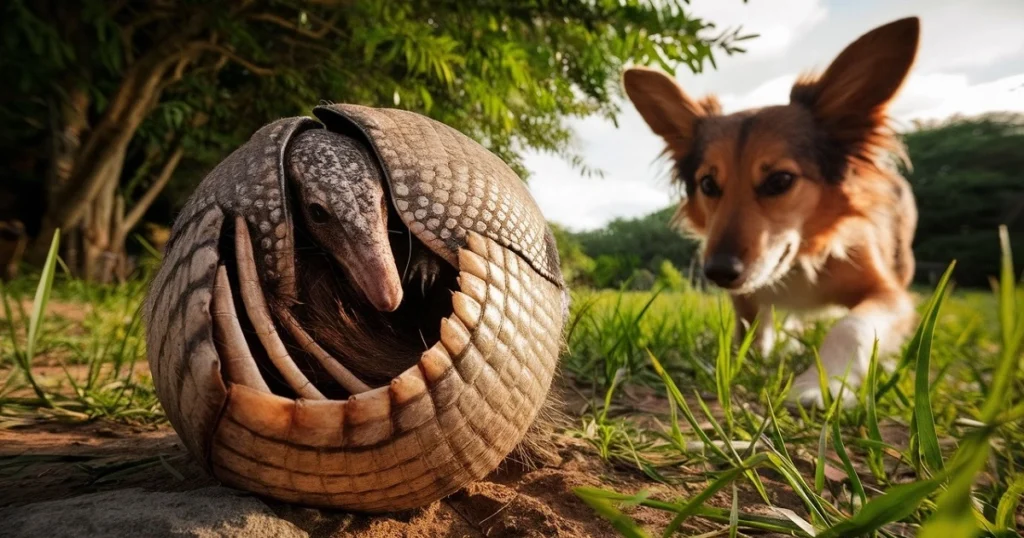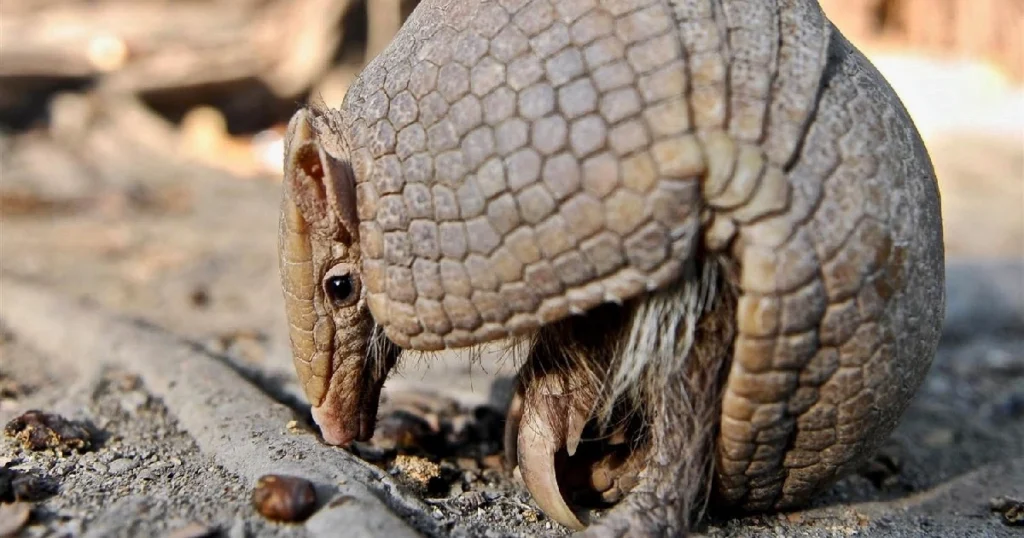
With their unique adaptations and distinctive features, Armadillos are intriguing creatures that inhabit various regions across the Americas. From their armored shells to specialized limbs and sensory capabilities, armadillos have evolved remarkable body parts suited to their burrowing lifestyle and ecological niche. This comprehensive guide delves deep into armadillo body parts' anatomy, functionalities, and environmental roles.

The head of an armadillo features a pointed snout equipped with a keen sense of smell, essential for detecting prey and navigating its environment. Although small and elongated, its skull provides robust protection during burrowing activities. This adaptation ensures the safety of vital sensory organs while facilitating efficient foraging and navigation underground.
Armadillos are renowned for their dermal armor, consisting of bony plates covered by tough, overlapping scales called scutes. Composed of keratin, the same protein found in human hair and nails, these scutes provide durability and flexibility to the shell. The shell is a defense mechanism against predators and environmental hazards, offering a secure retreat when threatened.
Armadillos possess powerful limbs with sharp claws adept at digging and foraging. Their front limbs are robust and well-suited for excavating burrows, allowing them to create shelter and search for food such as insects, larvae, and plant matter. The hind limbs provide stability and agility, enabling efficient movement across varied terrain.

The tail of an armadillo plays a crucial role in balance and communication. It is long and flexible and aids in agile movement both above and below ground. Armadillos also use their tails for scent marking, which helps establish territories and communicate with conspecifics.
Internally, armadillos possess adaptations that support their burrowing lifestyle. Their respiratory and cardiovascular systems are well-suited for sustained physical exertion during digging and prolonged periods underground. Armadillos also exhibit a low metabolic rate, allowing them to conserve energy while foraging and resting in their burrows.
Armadillos have a unique reproductive strategy characterized by delayed implantation. This enables females to control the timing of gestation based on environmental conditions. This adaptation ensures offspring are born during optimal seasons for survival. Mating behaviors and reproductive anatomy vary among species, influencing population dynamics and genetic diversity within armadillo communities.
Armadillos rely heavily on their senses, particularly their acute sense of smell and touch, to navigate their surroundings effectively. Their sensitive snouts detect food sources and potential threats, while tactile sensations aid in burrow navigation and social interactions. Vocalizations and body language also play roles in communication, facilitating social interactions and territorial defense.

Armadillos play vital ecological roles as both consumers and prey within their ecosystems. Consuming insects and aerating soil through burrowing contribute to nutrient cycling and soil health. However, habitat loss and human-wildlife conflicts pose significant threats to armadillo populations, emphasizing the importance of conservation efforts and habitat preservation.
Critter Stop, a professional humane wildlife removal company, provides essential services for managing armadillo and other wildlife conflicts. It has a fantastic reputation and customer reviews online because it provides high-quality work and excellent customer service. If you're experiencing issues with armadillos or other wildlife on your property, call Critter Stop at (214) 234-2616 for a free inspection and expert assistance in resolving wildlife or pest removal needs.
In conclusion, armadillos possess remarkable body parts and adaptations that reflect their evolutionary journey and ecological significance. From their armored shells and specialized limbs to their sensory capabilities and reproductive strategies, every aspect of armadillo anatomy contributes to their survival and success in diverse environments. By understanding and appreciating these adaptations, we gain insights into wildlife biology and underscore the importance of conservation efforts to safeguard these fascinating creatures for future generations.
Armadillos are fascinating creatures known for their unique adaptations and distinctive behaviors. Here are some commonly asked questions about armadillos, answered in detail:
Armadillo shells, also known as carapaces, are incredibly tough and resilient. Made up of bony plates covered by rugged, overlapping scales called scutes, the shell protects against predators and environmental hazards. These keratin scutes make the shell both durable and flexible, allowing armadillos to navigate their environments safely.
Armadillos have a remarkable defense mechanism that allows them to curl into a tight ball when threatened. This behavior allows their armored shell to cover vulnerable soft parts, such as their underbelly and limbs, effectively protecting them from potential predators. It's an instinct that helps armadillos survive in their habitats.
Yes, armadillos have a retractable penis that is typically hidden inside the body when not in use. This adaptation helps protect the reproductive organ from external elements and potential injuries while the armadillo navigates its burrowing activities and interacts with its environment.
Armadillo nipples are not readily visible on their external body. Like many mammals, armadillos have mammary glands underneath their armored shell. The young armadillos, known as pups, nurse from these hidden nipples within the safety of their mother's burrow.
Underneath their tough exterior shell, armadillos have relatively soft and vulnerable parts, including their abdomen, limbs, and the underside of their neck. These areas are protected when armadillos curl into a ball or burrow underground, shielding them from potential environmental threats.
Understanding these aspects of armadillo anatomy highlights their unique adaptations and underscores the importance of wildlife conservation and humane wildlife management practices. For expert assistance with armadillo or other wildlife issues in North Texas, contact Critter Stop at (214) 234-2616. Our team offers professional wildlife removal services with a commitment to quality and customer satisfaction.
Visit our Critter Library and learn more about our furry friends